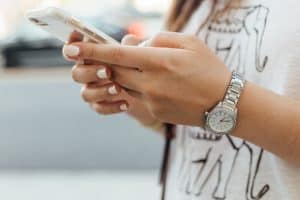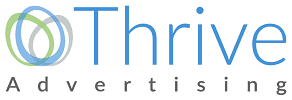Have you ever heard marketing people talk about “Programmatic Advertising” and wondered what they’re talking about? If you have, you’re not alone. Jargon confuses people and us marketers are some of the worst offenders. Programmatic Marketing doesn’t have to be confusing and if we drop the jargon and explain it in layman’s terms, you’ll probably be pretty excited about it. Programmatic Advertising is the practice of using computers to buy digital ad space automatically, using data to decide which ads to buy to reach your target customer, while bidding in real-time so that you pay less for the advertising.
Since computers can analyze millions of data points in seconds, they’re able to bid on ad space that makes the most sense for your business, immediately when the space is available, allowing the technology to serve millions of ad impressions to qualified users. The people who see your ads will be more likely to be interested in your ad message and you’ll pay significantly less than you would if you were to buy ads from a publisher directly.
Advertising Data allows us to laser target the demographics you want to reach.
1st-Party, 2nd-Party, and 3rd-Party Data are incredibly powerful ways to increase the effectiveness of your Digital Marketing Campaigns.
Let’s breakdown the difference between the three different data types:
- First-party Data- this is your own data on your customers. This can be done by placing a pixel* on your website, importing social media data, or using internal demographic information that you keep about your customers and their psychographics
- Second-party Data- data collected by someone other than you, who shares that data with you to help structure the programmatic strategy
- Third-party Data- is available to anyone at a cost. Typically adding between $1 to $2 to the CPM (cost per thousand).
Hold on, what’s an Advertising Pixel?
A pixel is a piece of tracking code that you add to your website to track users who visit your website. Pixels allow us to gather information about the users’ online behaviors which helps us serve them (or people like them) ads later. We’ve written an entire blog on Advertising Pixels here.
Programmatic Marketing sounds very exciting, tell me more…
We’d love to! Programmatic Display advertisers have the power to deliver personalized, always-on, highly relevant digital ads to consumers through Retargeting and Prospecting.
What is Retargeting in advertising?
Retargeting is serving ads to users who have visited your website. Ever shop at Nordstrom.com or Homedepot.com and have a pair shoes or a ladder that you looked at follow you for a couple days? That’s Retargeting, sometimes called Remarketing. Remarketing and Retargeting are the same thing. It’s the practice of past site visitors seeing ads specifically selected for their interests after they leave your website. The ads are served all over the internet, wherever they go next. You’ll pop up on big name websites for a fraction of the cost of a direct publisher buy. Above is an example from Thrive’s own advertising campaigns. See the screenshot above? We’re on Cnn.com! We practice what we preach over here.
Remarketing is the first thing you should do in advertising in 2020. Do NOT forgo this powerful advertising tactic. It’s inexpensive and profoundly effective.
Programmatic Prospecting
Prospecting advertising tactics use pixel data (1st party data) or other data (2nd and 3rd party data) to find “Look-Alike” users. Look-Alike users are users who behave similarly online to your current customers. Identifying these Look-Alike users allows us to serve ads to users who are similar to your current customers.
Programmatic Advertising Example)
I view a pair of shoes on Nordstrom.com. My behavior online may be very similar to another woman like me. So, Nordstrom would serve an ad showing those shoes to my “Look-Alike” online. By doing this, it increases the likelihood that these prospected users will be interested in the ads. It helps increase ROI and engagement by spending advertising dollars where they will be most effective rather than the old school “shotgun approach,” where advertisers would just spray ads all over the web hoping they hit some of their demographic. That old way led to a lot of wasted ad dollars…

What is a Geofence in advertising?
A Geofence known as “Geofencing” is a location-based digital marketing tool that allows us to send messages to smartphone users who have been in or currently in a defined geographic area. Geofencing can be done in real-time or with historical data. Why is this awesome? Well, if you serve a user an ad for a store they’re physically near or actually shopping in, you’ll have a better chance at converting them into buyers. But even cooler than that, in our opinion, is the use of historical data. Historical data gathered from Geofencing can help sellers of high ticket items sell their products. For instance, a home builder could define a Geofence around their competition’s development. Then any user who has visited that competing housing development would be served an ad for advertising developer. Geofence ads can go back up to one full year! So, we can actually serve ads to all users who have visited a specific location within the past 12 months! Amazing, right?! This works well for car dealerships and many other businesses, too.
Programmatic Advertising doesn’t have to be complicated. In fact, we went through Cornell University’s Digital Marketing Program in 2019 so that we were 100% up to date on all Digital Marketing tactics and Programmatic was an area we spent a great deal of time studying.
Our job is to walk our customers through the available advertising tactics and help them select the best tactic for delivering ROI producing ad campaigns. There are hundreds of companies who say they offer Programmatic Advertising. Most of them have enormous markups and subpar DSPs*. We’ve researched and tested extensively to find the best DSP available. We’ve found the best one for the job. It delivers fantastic results with the best Artificial Intelligence. They invested heavily in research versus into their sales efforts like many of the others in the market. Therefore, they deliver a superior product without smoke and mirrors.
Demand Side Platform (DSP) Explained
A *Demand-Side Platform (DSP) is the software used to purchase advertising in above described automated fashion. DSPs are most often used by advertisers and agencies to help them buy display, video, mobile and search ads.
Want to get started? Give us a call. We’ll talk you through Programmatic or any other type of advertising you’re interested in. Did you know we’re experts at digital and traditional advertising? Being able to understand and recommend the best advertising mix is one of our most valuable assets. There’s lots of agencies who are great at digital and many that are good at traditional advertising. But finding one that knows both inside and out?! That’s our competitive advantage. We’d love to chat with you!


